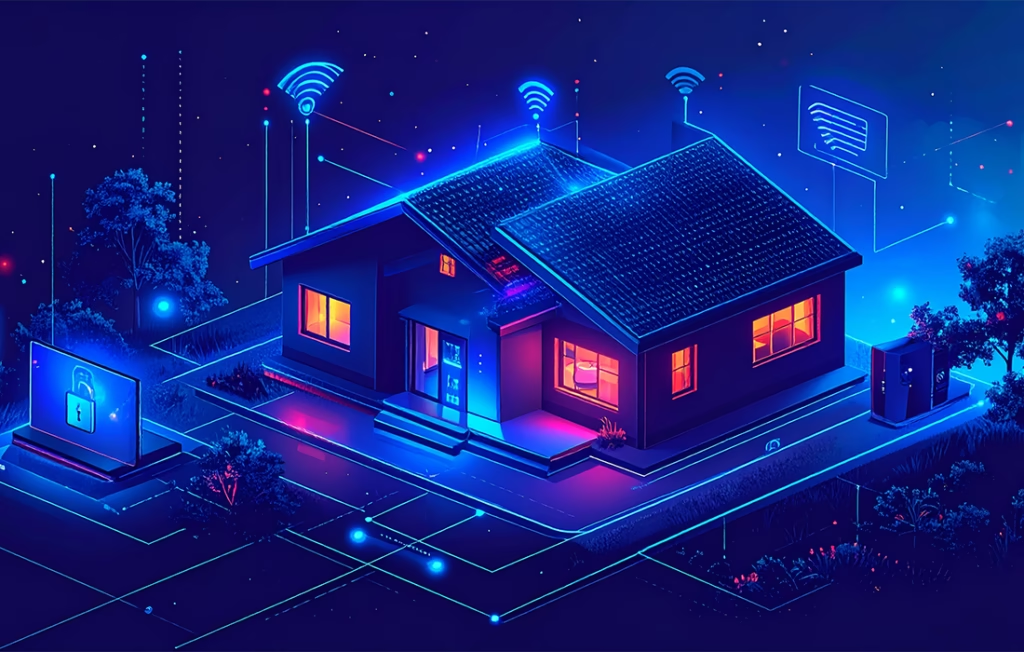Cybersecurity for Remote Workers: How to Secure Your Home Office Network

Remote work has become a permanent part of modern life. Whether you’re a freelancer, small-business owner, or part of a large company, your home office is now your daily workplace. But unlike a traditional office protected by corporate firewalls and IT teams, your home network can become an open door for cybercriminals.
Cybersecurity for remote workers isn’t just about installing antivirus software — it’s about creating a secure environment where your personal and professional data remain safe. Let’s explore how you can transform your home office into a fortress of digital safety.
1. Understanding the Risks of Remote Work
When you work remotely, you connect from multiple devices — laptops, phones, routers, smart speakers, sometimes even coffee shop Wi-Fi. Each of these access points can become a vulnerability.
Common risks include:
- Phishing attacks: Fake emails or messages designed to trick you into revealing credentials.
- Unsecured Wi-Fi: Default passwords or outdated routers can allow hackers to intercept your traffic.
- Malware and ransomware: Malicious files that can encrypt your data or steal sensitive information.
- Data leaks: Poor password hygiene or file-sharing habits can lead to exposure of private files.
Understanding these risks is the first step in protecting yourself and your company’s data.
2. Strengthen Your Home Network

Your Wi-Fi router is the gatekeeper of your home office network. Strengthening it can drastically reduce the chances of an intrusion.
Tips to Secure Your Wi-Fi Router
- Change default credentials: Replace factory-set usernames and passwords immediately.
- Use WPA3 encryption: It’s the latest and most secure standard for Wi-Fi protection.
- Update firmware regularly: Check your router’s app or manufacturer’s website regularly for updates.
- Disable remote management: This prevents outsiders from controlling your router.
- Hide your SSID: You can make your network invisible to casual scanners.
Use a Guest Network
If others in your household use the internet, set up a guest Wi-Fi. This isolates work devices from personal or IoT gadgets like smart TVs or baby monitors that are more vulnerable to attacks.
3. Use a Reliable Virtual Private Network (VPN)
A VPN encrypts your internet traffic, keeping your online activity private from hackers, and even your internet service provider.
Choose a VPN that offers:
- No-logs policy
- High-speed servers in multiple countries
- Strong AES-256 encryption
- Multi-device support
Always keep your VPN active when handling confidential documents or using public Wi-Fi.
4. Protect Your Devices and Data
Your computer, smartphone, and tablet are the primary tools of your remote office. Protecting them is critical.
Keep Software Updated
Outdated software often contains vulnerabilities. Turn on automatic updates for your operating system, antivirus, browsers, and productivity tools.
Learn more about keeping your software updated in our guide on software updates.
Install Trusted Security Tools
Use well-reviewed antivirus and anti-malware programs. Many suites now offer real-time protection, email scanning, and ransomware defense.
Enable Device Encryption
Encrypting your hard drives and mobile devices ensures that even if someone gains physical access, they can’t read your data without your password.
Back Up Your Data
Follow the 3-2-1 rule,
- 3 copies of your data
- Stored on 2 different types of media
- With 1 copy stored offsite or in the cloud
Backups are your safety net against hardware failure, ransomware, or accidental deletion.
5. Create Strong Passwords and Use Multi-Factor Authentication

Weak passwords are one of the biggest threats to remote security. Instead of reusing the same password, use a password manager to generate and store complex credentials.
Password Tips
- Minimum of 12 characters
- Mix upper/lowercase letters, numbers, and symbols
- Avoid personal information like birthdays or names
Add an extra layer of defense with multi-factor authentication (MFA) — even if someone steals your password, they can’t log in without your secondary verification code or biometric approval.
6. Separate Work and Personal Devices
Blurring the line between work and personal life is common when working remotely, but dangerous for cybersecurity.
Use your work laptop only for professional tasks and keep personal browsing, shopping, or streaming on separate devices. This minimizes cross-contamination if a personal account is compromised.
If you must use one device, create separate user profiles for work and personal use to reduce the risk of data leakage.
7. Be Cautious with Emails and Links
Phishing remains one of the most successful cyber-attack methods because it preys on human trust.
Always double-check the sender’s email address before clicking links or downloading attachments. Legitimate organizations never ask for passwords or payment details through email.
If you’re unsure, contact the sender directly through official channels rather than replying to the suspicious message.
8. Secure Video Meetings and File Sharing
Remote work relies heavily on collaboration tools — but they can also be exploited if misused.
- Lock meetings: Use passwords for video conferences and admit only known participants.
- Update collaboration apps: Platforms like Zoom, Teams, and Slack regularly release security patches.
- Be careful with screen sharing: Share only the specific window needed, not your entire desktop.
When sharing files, use encrypted storage platforms or password-protected links instead of public file-sharing sites.
9. Build a Cybersecurity Routine
Good cybersecurity for remote workers comes from consistent habits, not “one-time” fixes.
Create a checklist you can follow every week:
- Run an antivirus scan
- Review devices connected to your Wi-Fi
- Check for pending software updates
- Change passwords every few months
- Verify backup integrity
Consistency keeps small problems from turning into major breaches.
10. Adopt a Zero-Trust Mindset
The “zero trust” approach assumes that no one — inside or outside your network — is automatically safe. Verify every user and device before granting access.
For individuals, that means questioning every new login attempt, unknown link, or software installation. Trust is earned, not assumed, in cybersecurity.
11. Stay Informed and Keep Learning
Cyber threats evolve daily. Subscribe to reputable cybersecurity newsletters or follow trusted organizations that share alerts about new scams and vulnerabilities.
Ongoing awareness ensures you can adapt your habits before a threat reaches your inbox.
Further Information
To learn more about remote work security, consult these trusted resources:
- Australian Cyber Security Centre: Security tips for remote working – guidance on passphrases, network security, backups and scam awareness.
- Microsoft: Top tips for working more securely from home – official advice on encryption, VPN use and private workspaces.
- Hoplon InfoSec: Cybersecurity for Remote Workers: How to Protect Your Home Office – an in‑depth overview of network, device and physical security practices.
- Kaspersky Resource Center: Best practices for working from home and remotely – tips on antivirus software, Wi‑Fi security, webcam covers and password strength.
Related Internal Articles
If you want to explore more professional cybersecurity guidance, the following trusted sources provide in-depth insights:
- Why software updates matter for security: Importance of software updates
- Protecting your personal data online: How to protect personal data
- Recognizing and preventing phishing scams: Phishing scams – types & prevention
- Choosing the right VPN: How to choose a VPN
Conclusion
The flexibility of remote work brings comfort and convenience — but it also demands responsibility. Cybersecurity for remote workers is not a luxury; it’s a necessity.
By taking small but consistent steps — securing your Wi-Fi, using a VPN, backing up data, and practicing cautious online behavior — you protect not only your job but also your identity, privacy, and peace of mind.
Working from home can be just as secure as working from a corporate office — as long as you build your digital walls high and keep your guard up.




2 thoughts on “Cybersecurity for Remote Workers: How to Secure Your Home Office Network”